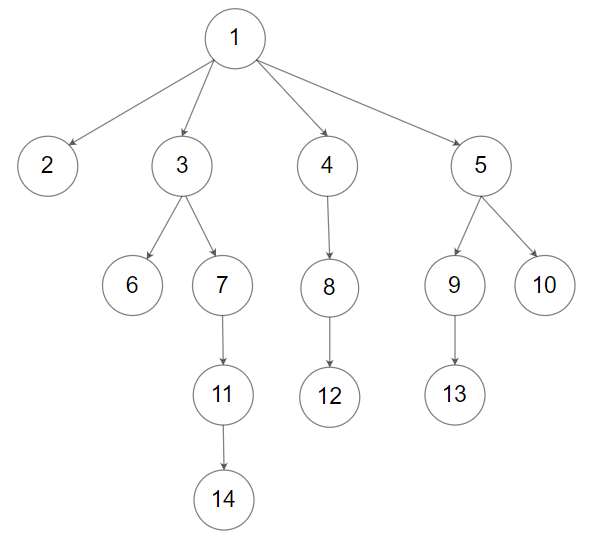題目描述:
Given an n-ary tree, return the level order traversal of its nodes’ values.
Nary-Tree input serialization is represented in their level order traversal, each group of children is separated by the null value (See examples).
Example 1:

Input: root = [1,null,3,2,4,null,5,6]
Output: [[1],[3,2,4],[5,6]]
Example 2:

Input: root = [1,null,2,3,4,5,null,null,6,7,null,8,null,9,10,null,null,11,null,12,null,13,null,null,14]
Output: [[1],[2,3,4,5],[6,7,8,9,10],[11,12,13],[14]]
Constraints:
The height of the n-ary tree is less than or equal to
1000The total number of nodes is between
[0, 104]
一刷題解(Iteration):
這題雖然也是N叉樹的遍歷,但是做起來與前後序遍歷不一樣。對於N叉樹的前後序遍歷而言,直接通過遍歷每個子樹進行Recursion來完成來要容易的多。就像下面這樣:
前序遍歷
public class Solution {
public IList<int> Preorder(Node root) {
List<int> res = new List<int>();
PreorderHelper(res, root);
return res;
}
void PreorderHelper(List<int> res, Node root)
{
if(root == null) { return; }
//當前節點
res.Add(root.val);
//從左往右
for (int i = 0; i < root.children.Count; i++)
{
PreorderHelper(res, root.children[i]);
}
}
} 後序遍歷
public class Solution {
public IList<int> Postorder(Node root) {
List<int> res = new List<int>();
PostorderHelper(res, root);
return res;
}
void PostorderHelper(List<int> res, Node root)
{
if (root == null) { return; }
//從左往右
foreach (var node in root.children)
{
PostorderHelper(res, node);
}
//當前節點
res.Add(root.val);
}
} 但是要做層序遍歷的話,使用Iteration的邏輯會更容易理順。通過持續把每層節點加到一個隊列中,然後再遍歷當層子節點數量的次數,把當層子節點出列,將這些子節點的下一層節點入列,直到再沒有節點加到隊列中為止,這個N叉樹也就遍歷完結。
public class Solution {
public IList<IList<int>> LevelOrder(Node root) {
List<IList<int>> res = new List<IList<int>>();
if(root == null) { return res; }
//只有這個隊列還有元素,代表還有一層
Queue<Node> nodeQ = new Queue<Node>();
nodeQ.Enqueue(root);
//當層節點列表和數量
List<int> currStair;
int stairNodeCnt = 0;
while(nodeQ.Count > 0)
{
currStair = new List<int>();
//每一層的節點數量 = 每一次開始遍歷隊列時的隊列元素數量
stairNodeCnt = nodeQ.Count;
//遍歷{當層節點數量}次
while(stairNodeCnt > 0)
{
Node curr = nodeQ.Dequeue();
//把節點放到當層的結果列表
currStair.Add(curr.val);
//把子節點入隊
foreach (Node child in curr.children)
{
if(child != null)
{
nodeQ.Enqueue(child);
}
}
stairNodeCnt--;
}
//完成一層的遍歷
res.Add(currStair);
}
return res;
}
} 
